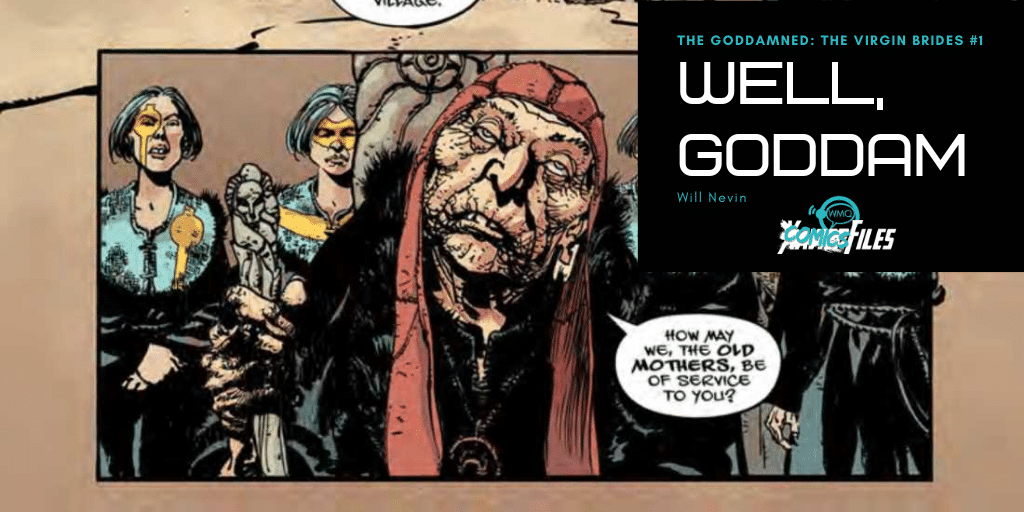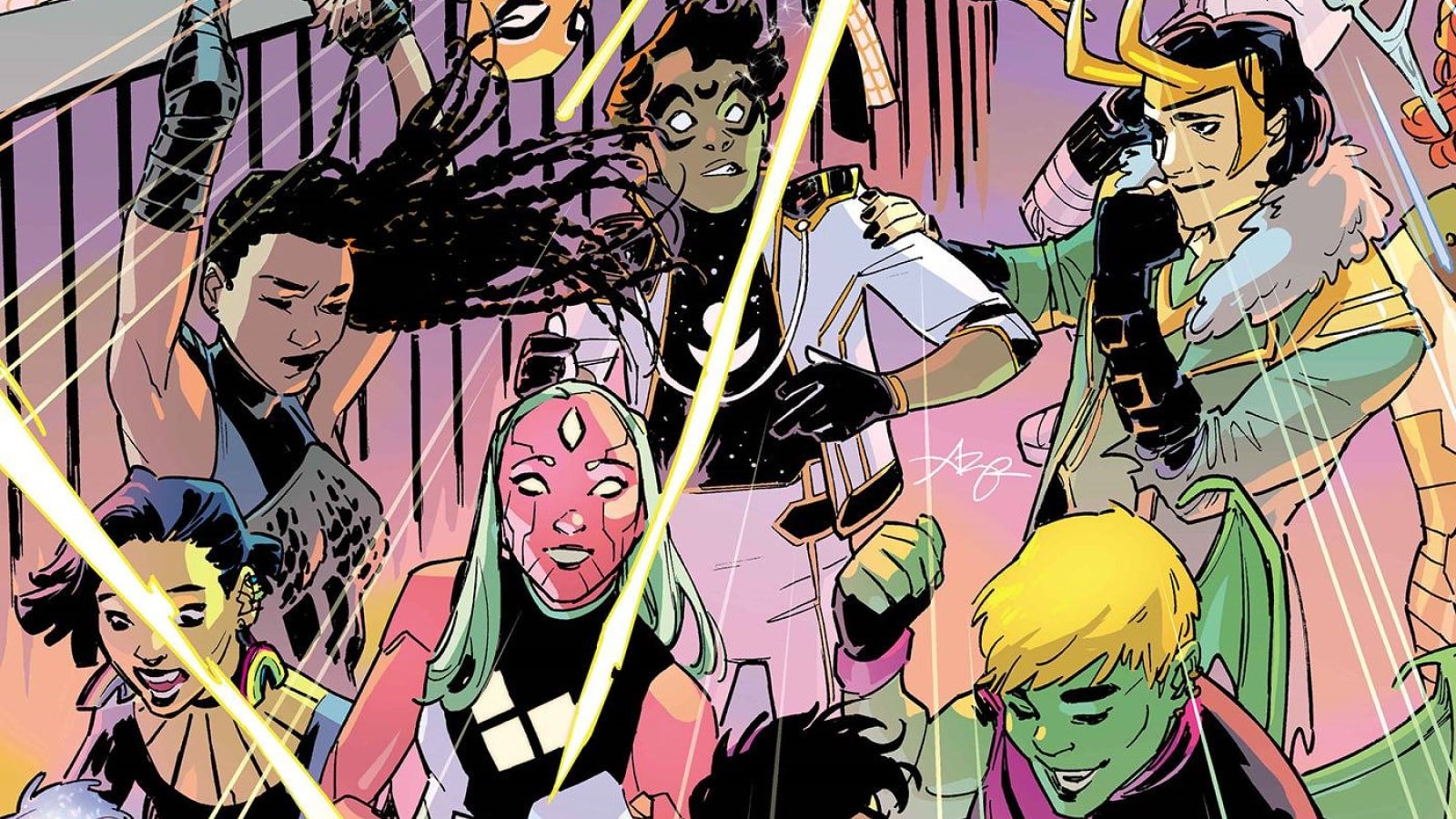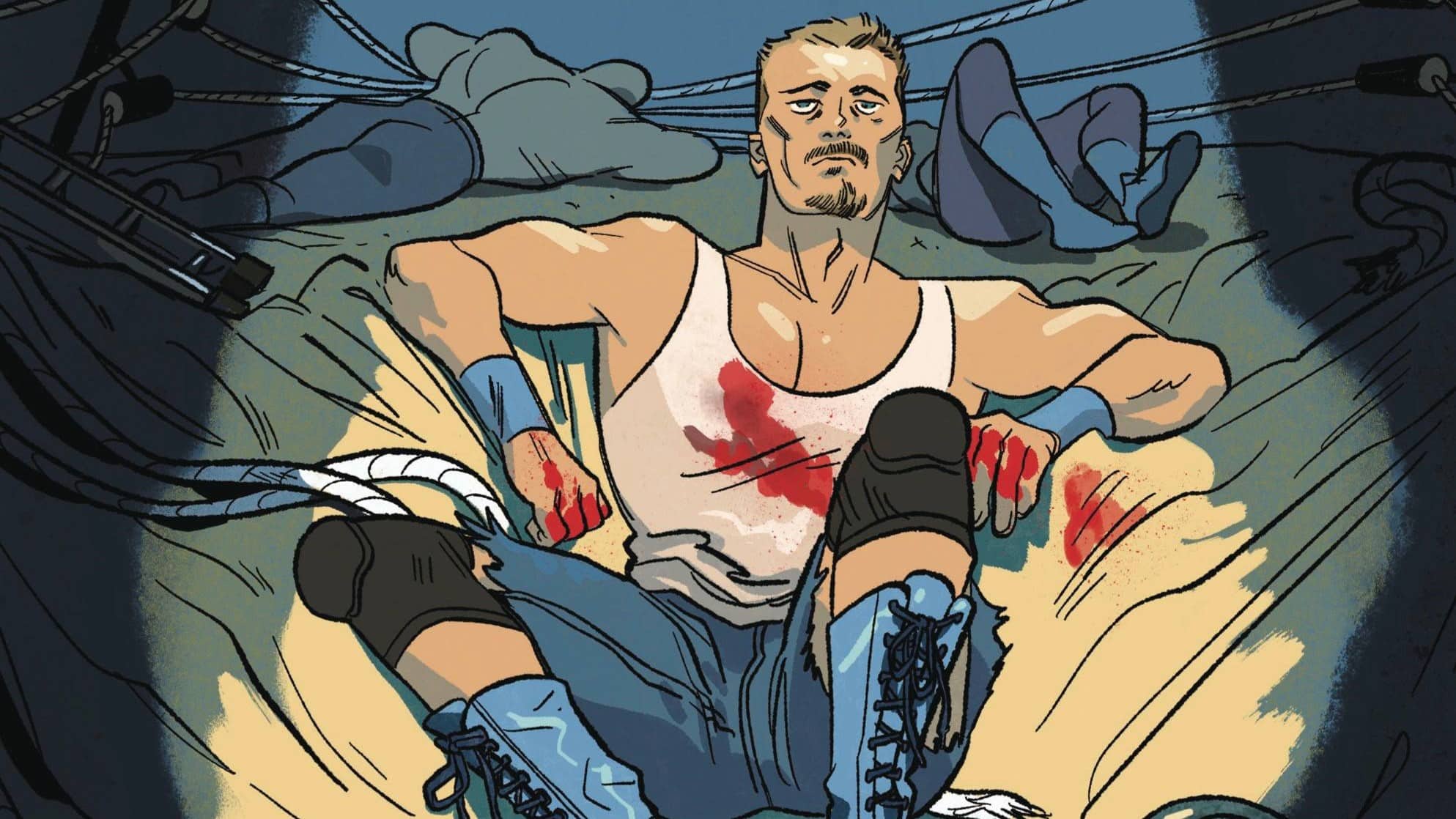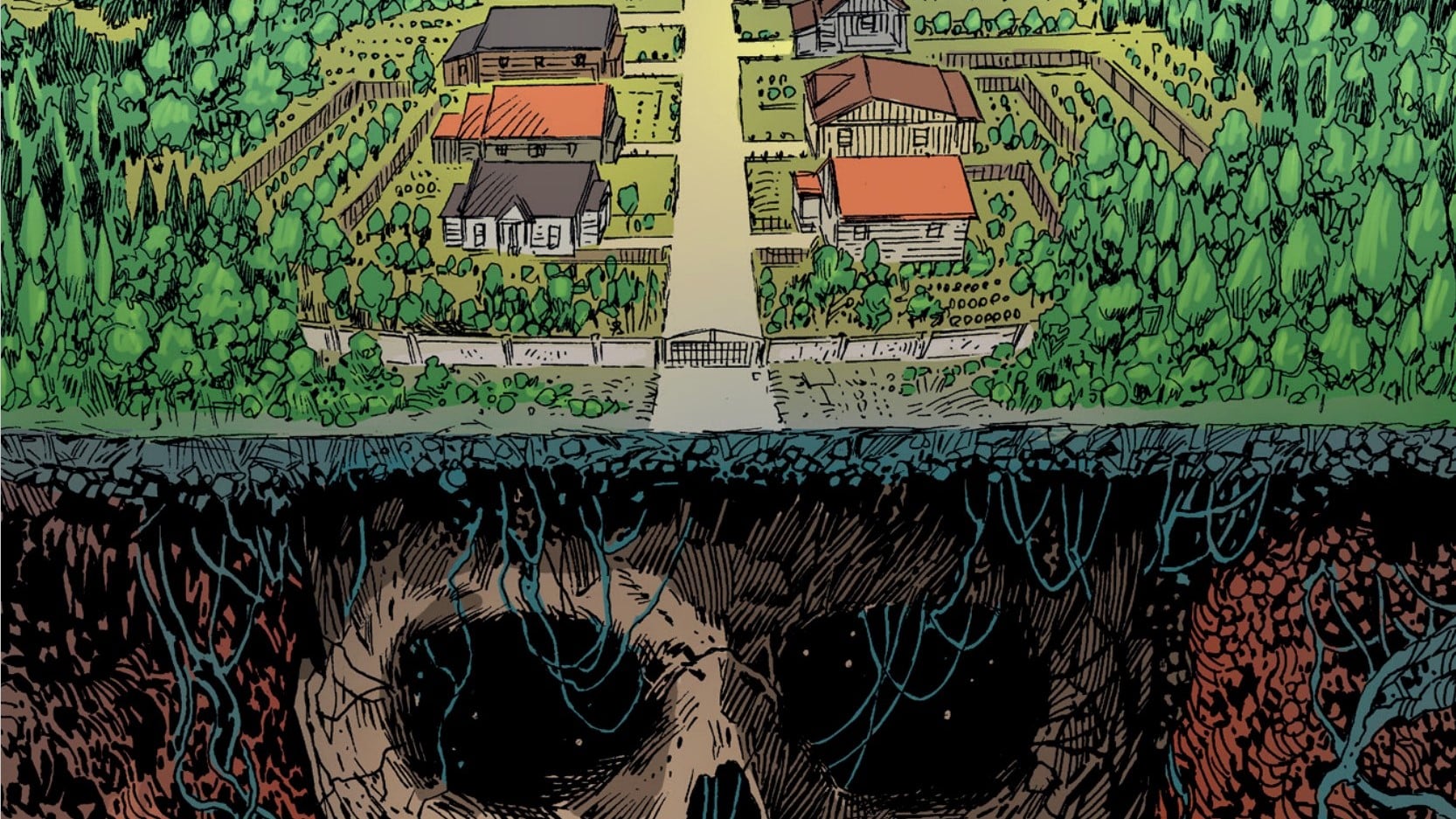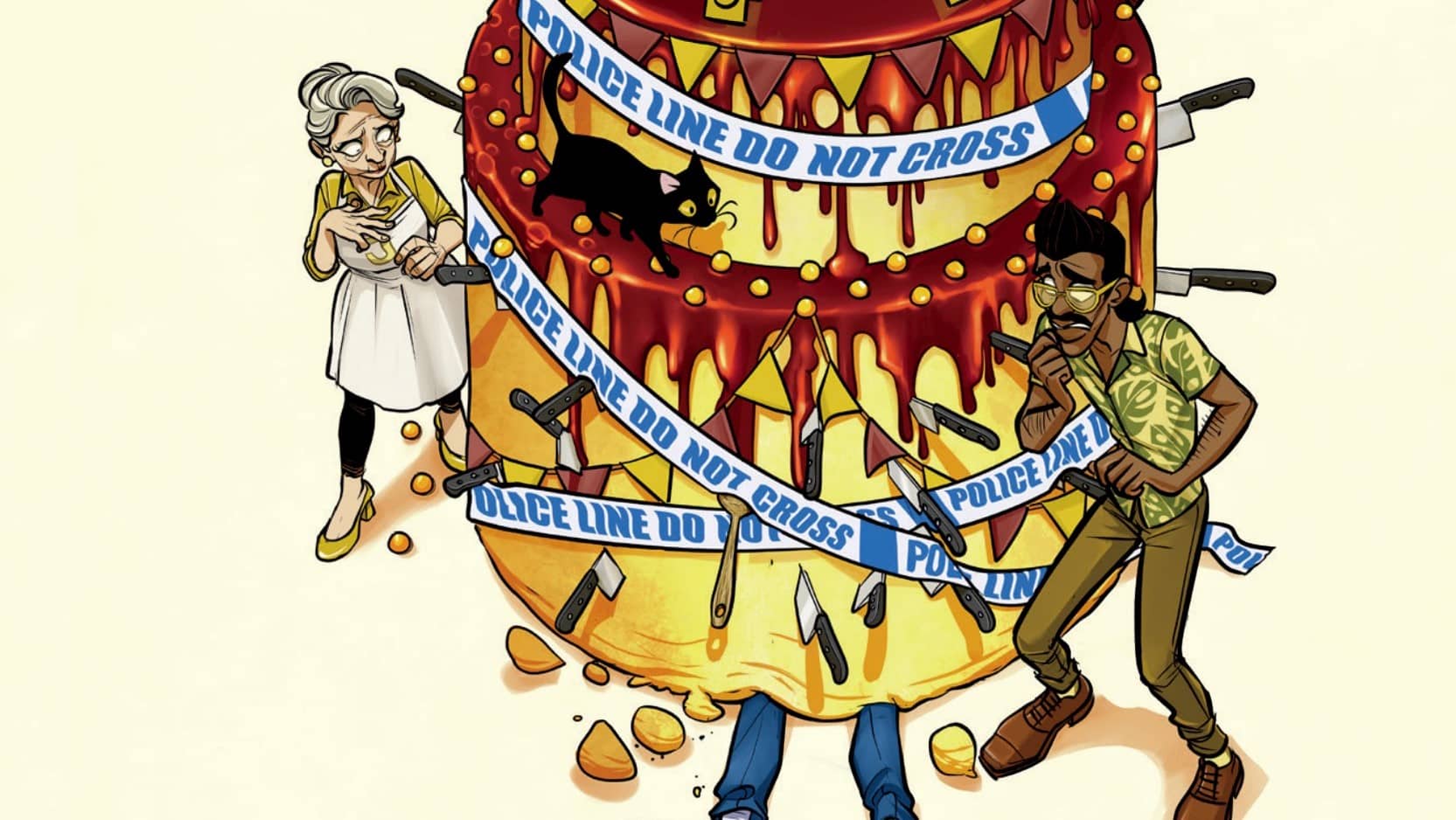The Goddamned: The Virgin Brides #1
Writer: Jason Aaron, Artist: r.m. Guera, Colorist: Giulia Brusco, Letterer: Jared K. Fletcher, Publisher: Image
Content warning: The following review of “The Goddamned: Virgin Brides” contains discussion of child sexual abuse.

Animal sacrifice.
Blood drinking.
Child sexual abuse.
The McMartin Preschool case — a criminal trial that consumed Manhattan Beach, California, and much of the nation in the mid-1980s — was a creature spawned by the Satanic Panic (the brief moment in which society was obsessed with hidden devil-worshipping cults and convinced “Dungeons & Dragons” could kill), but it went further than that. The allegations, which were prompted by heavy coaching and highly suggestive interviewing, eventually included some 380 children, and their quantity was only matched by the depth of their depravity: One child said he was forced to watch a baby’s beheading and subsequently made to drink the baby’s blood, while another said the daycare staff took children to cemeteries and defiled corpses.
Still another said he watched the staff fly.
The accusations were disgusting, bizarre and so ludicrous on their face as to be unbelievable — and yet it took seven years, two hung juries and $15 million in expenses to reach that conclusion, all while one defendant spent five years in jail awaiting his eventual release.
Why? It’s certainly hard to understand the moment of a moral panic once we’re outside it; some 35 years later, it all looks sad and a little silly, like some obnoxious talking head on cable television still tilting at “Doom” or “Grand Theft Auto,” albeit with the unfortunately real collateral damage of the trauma inflicted upon the McMartin Preschool children during their coaching and testimony. But when you remove the charlatans and other assorted moral entrepreneurs — the Fredric Werthams of the world, in essence — there’s a core commonality in most moral panics: the admirable, almost compulsive need to protect children from harms both real and imagined.
“The Goddamned: The Virgin Brides,” the second volume of writer Jason Aaron and artist r. m. Guéra’s pitch-black biblical epic, uses the emotional need to shield the most vulnerable among us to great effect. However, the harm faced by the series’ child leads is almost unconscionable and the same one reckoned with by the people of Manhattan Beach all those years ago — but in Aaron and Guéra’s work, it’s not Satanic worshipers who are abusing children; rather, it is the angels themselves who are raping children and producing monstrous offspring. The story is unsettling and designed as such, likely proffered as an indictment of the Good Book and its progenitors. But the heaviness, the bleakness, the suffering of it all will be jumping off points for many readers, and I cannot in good conscience shun them for it.
The central conceit of “The Goddamned” — a series last seen in 2016 — is that these biblical characters speak in modern English, with all of its profanity included therein. “I hate that withered old c***,” says one tween girl to another, and that’s one of the lighter lines of dialogue. It takes a bit of getting used to, but again, it’s not the heaviest thing to deal with here in the second volume.
Another feature of the series is that it’s grounded — sometimes quite literally — in the Christian Bible; the first volume was the story of Cain some thousand years after he killed his brother. Here, Aaron riffs on part of one verse from Genesis: “For after the sons of God went in to the daughters of men, and they brought forth children[.]” Overall, it’s a harder sell at the outset — the Cain story has inherent intrigue (the world’s first murderer cursed to walk the earth for eternity!), but in the first issue of “The Virgin Brides,” we have only suffering, pain and sympathy for the poor children caught between their keepers and the deities they’re taught to worship.
Sharri and Jael, the two girls at the center of “The Virgin Brides,” are captives at a proto-Christian convent run by cruel nuns and watched over by a warrior guard of battle-hardened women. The children are kept at the convent until their “rose blooms” (their first menstruation), upon which they are marched up a mountain by the warrior guard and given to the angels, who rape them and produce grotesque human/angel hybrids.
While the sexual violence is handled off-panel, the persistent references to menstruation at least call to mind another Image book. But the Bible itself has at least 100 such mentions, so…I don’t know? It seems like one more place for readers to step off, not because it’s wrong to talk about the topic, but because it feels unseemly to so strongly center the first issue on it. (Presumably it will drop off in subsequent chapters with the cult’s practices so firmly established, but still.)
The story has a charge to it since our loyalties are so strongly tied to Sharri and Jael, and the two are given an imperative at the end of the first issue that lends the operation a strong sense of urgency. Guéra’s work — particularly in rendering the physical evil and menace of both the nuns and the hybrid offspring — is strong.
I can’t say that it’s not a well-constructed comic.
It’s just A Lot.
And while that doesn’t mean that works can’t challenge us or be unpleasant, it does mean readers should be able to opt out of the unrelenting and crushing path of heaviness that “The Virgin Brides” appears to be on. Some of those same readers may not make it through the first issue.
I do not fault them.
Determined to find the imaginary secret tunnels and passages that investigators had somehow missed in almost two years of investigation, some 50 McMartin Preschool parents began digging in a lot next to the school in March 1985. They found nothing but dirt.
Some people will go through anything.
Will Nevin loves bourbon and AP style and gets paid to teach one of those things. He is on Twitter far too often.

